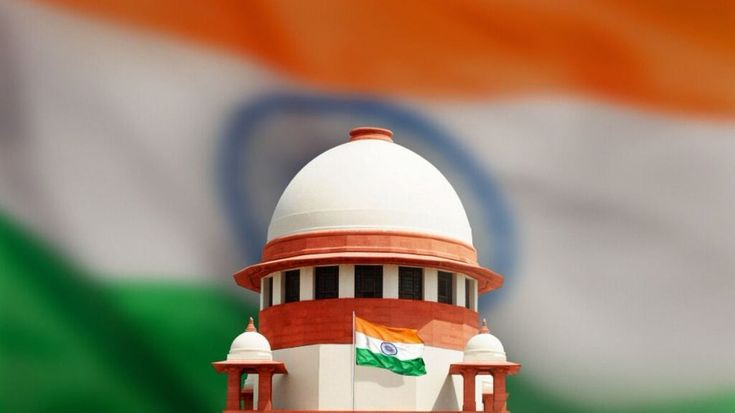Concept and Constitutional Foundation
The tortious liability of the State refers to the responsibility of the government or its officials for wrongful acts or omissions that cause harm to individuals. In India, this concept originates from the common law principle that “the King can do no wrong.” However, in a democratic republic, such immunity cannot coexist with the rule of law and constitutional accountability. The principle has evolved significantly through judicial interpretation under Article 300 of the Indian Constitution, which provides that the Union and the States can be sued for acts committed in the exercise of their powers, much like a private individual, subject to constitutional and statutory limitations.
The debate around State liability centers on balancing sovereign immunity with citizen’s rights. Earlier, the courts followed a rigid distinction between sovereign and non-sovereign functions, granting immunity for sovereign acts. However, modern jurisprudence increasingly focuses on public accountability, human rights, and constitutional torts — marking a shift from immunity to responsibility.
Historical Evolution: From P&O Case to Constitutional Tort Doctrine
The roots of State liability in India can be traced to the landmark P&O Steam Navigation Company v. Secretary of State (1861), where the Calcutta Supreme Court distinguished between sovereign and non-sovereign functions. It held that the State was liable for acts done in its commercial capacity, but not for acts in its sovereign capacity, such as defense or law enforcement.
Post-Independence, this doctrine was carried forward under Article 300(1) of the Constitution. However, the Supreme Court of India began to move away from this colonial approach in the late 20th century, especially through cases like State of Rajasthan v. Vidyawati (1962) and Kasturilal Ralia Ram Jain v. State of U.P. (1965). While Vidyawati upheld government liability for negligence of public servants in non-sovereign functions, Kasturilal reinstated the immunity for sovereign acts, leading to inconsistency.
These early cases laid the groundwork for the modern doctrine of constitutional tort, where violations of fundamental rights are treated as actionable wrongs, leading to monetary compensation from the State.
Emergence of the Doctrine of Constitutional Tort
A significant transformation occurred in the 1980s and 1990s, when the judiciary began using Article 32 and Article 226 to award compensation for violations of fundamental rights. This evolution gave birth to the doctrine of constitutional tort, holding the State accountable not just for private wrongs, but for breaches of public duties.
Key cases include:
- Rudal Shah v. State of Bihar (1983) – The Supreme Court awarded compensation to a person wrongfully detained for 14 years after acquittal, recognizing State liability for violation of Article 21 (Right to Life).
- Nilabati Behera v. State of Orissa (1993) – The Court granted compensation for custodial death, emphasizing that State officials cannot escape liability for fundamental rights violations.
- D.K. Basu v. State of West Bengal (1997) – Guidelines were issued against custodial torture, and compensation was recognized as a constitutional remedy.
These cases established that sovereign immunity cannot override fundamental rights, thereby constitutionalizing the law of tortious liability in India.
Recent Trends: Expanding the Scope of State Liability
In recent years, Indian courts have shown an increasing commitment to holding the State accountable for administrative negligence, human rights violations, environmental damage, and police excesses. The trend reflects a shift toward a welfare-oriented and rights-based governance model, in tune with constitutional values.
Recent judicial trends include:
- Environmental Liability: In MC Mehta v. Union of India (1987), the Supreme Court introduced the principle of absolute liability for hazardous industries, making the State and private actors strictly liable for environmental harm.
- Police Misconduct and Custodial Deaths: In Re: Inhuman Conditions in 1382 Prisons (2016), the Court reinforced State liability for the protection of prisoners’ rights under Article 21.
- Administrative Negligence: In Municipal Corporation of Delhi v. Uphaar Victims Association (2011), the Court held government authorities liable for negligence leading to the Uphaar cinema fire tragedy.
- Compensation for Judicial and Administrative Errors: Courts have increasingly awarded ex-gratia and constitutional compensation in cases of wrongful prosecution and delayed justice.
Thus, modern jurisprudence reflects a progressive recognition that the State is a service provider, and must be accountable for any harm caused to citizens through acts of omission or commission.
Principle of Vicarious Liability and State Responsibility
Under Article 300(1), the State’s liability is primarily vicarious, meaning that it is held responsible for the wrongful acts of its employees performed in the course of employment. This concept aligns with the doctrine of agency under tort law, but with limitations based on the sovereign function test.
However, recent rulings indicate that vicarious liability is not confined to private law principles but is interpreted in light of public accountability and constitutional morality. For instance, in Common Cause v. Union of India (1999), the Supreme Court held the government liable for misuse of discretionary powers.
Moreover, the right to compensation for State wrongs is now considered an integral part of Article 21, making the government’s liability both constitutional and moral. This broadens the scope of State accountability beyond the traditional boundaries of sovereign immunity.
Challenges and Limitations
Despite progressive trends, several challenges persist in the effective implementation of State liability:
- Absence of a uniform legislation defining the scope of tortious liability for the Union and the States.
- Unclear distinction between sovereign and non-sovereign functions, leading to inconsistent judicial outcomes.
- Dependence on judicial discretion, resulting in unpredictable compensation standards.
- Lack of enforcement mechanisms for constitutional tort claims in lower courts.
A proposed Comprehensive Legislation on State Liability could address these issues by codifying principles and ensuring uniformity, predictability, and fairness in awarding compensation.
Real-Time Example
In Kamal Kaur v. State of Punjab (2022), the Punjab and Haryana High Court awarded ₹10 lakh compensation to the family of a man who died due to police negligence in custody. The Court reiterated that State liability extends to wrongful acts of its agents, even when performed in official capacity, emphasizing that constitutional protection of life and liberty prevails over sovereign immunity.
Similarly, in Re: Custodial Death of Jayaraj and Bennix (2020, Tamil Nadu), the judiciary held the police and State accountable for custodial violence, reaffirming that no government function, however sovereign, can justify human rights violations.
Mnemonic to Remember — “STATE ACTS”
To easily recall the concept and evolution of tortious liability of the State, remember the mnemonic “STATE ACTS”:
- S – Sovereign vs Non-sovereign distinction: Origin from P&O Case (1861).
- T – Tort Liability under Article 300: Government can be sued like a private person.
- A – Accountability Principle: Courts promote public law remedies.
- T – Tort to Constitutional Tort: Expansion through Rudal Shah, Nilabati Behera, D.K. Basu.
- E – Evolving Jurisprudence: Environmental, administrative, and custodial liabilities.
- A – Absolute Liability: Introduced in MC Mehta v. Union of India.
- C – Compensation as a Fundamental Right: Linked with Article 21.
- T – Transparency and Fairness: Courts demand accountability in governance.
- S – Sovereign Immunity Diluted: Human rights take precedence.
Mnemonic Summary: “STATE ACTS” = Sovereign vs Non-sovereign, Tort Liability, Accountability, Tort to Constitutional Tort, Evolving trends, Absolute liability, Compensation, Transparency, Sovereign Immunity Diluted.
About lawgnan
Explore the Tortious Liability of the State in India in depth at Lawgnan.in. Understand how Article 300 of the Constitution empowers citizens to hold the government accountable for wrongful acts and omissions. Learn through landmark cases like P&O Steam Navigation (1861), Rudal Shah (1983), Nilabati Behera (1993), and D.K. Basu (1997) that shaped the doctrine of constitutional tort. Perfect for law students, UPSC aspirants, and judiciary candidates, this article explains how India transitioned from sovereign immunity to constitutional accountability. Strengthen your grasp of constitutional law, public liability, and good governance only on Lawgnan.




